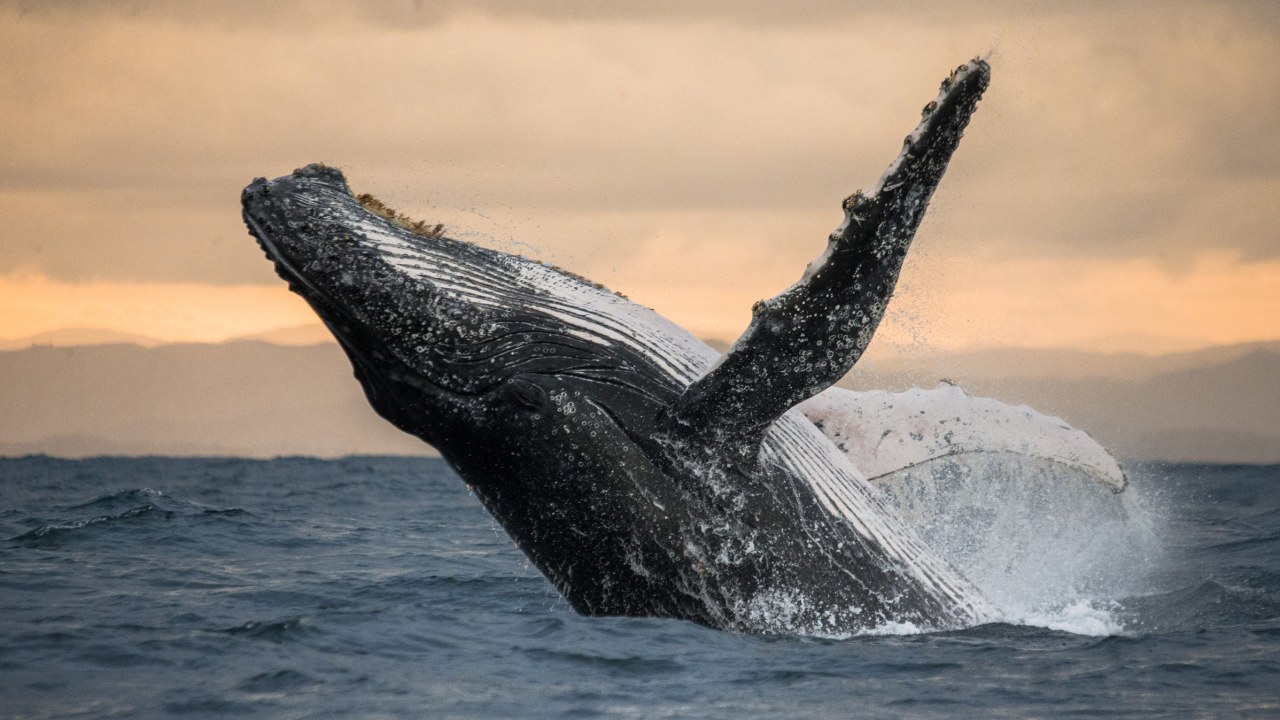A video showing a snorkeler holding on to the back of a whale shark in Malaysia has triggered outrage.

The man is thought to be a tourist guide, reports The Star, and was captured in the video near Pulau Sibuan on November 25.
“SPDA has issued reminders for each dive center to only hire qualified tourist guides,” Semporna Professional Diver Association President Suzimin Idri said in a statement on November 26.
“Once again, the SPDA urges the tourism players in Semporna to give the proper training and awareness to their staff,” Suzimin said.
Divers around the world are encouraged not to touch any wildlife at any time, but the whale shark is an endangered species, making the action shown in the video all the more controversial.
Whale sharks can grow up to 40 feet long, but despite their gargantuan size, they feed only on microscopic plankton. They rarely pose any danger to humans but can cause injury in self-defense.
“Any interaction with marine mammals in the wild can be potentially harmful for both people and animals and can lead to disease transfer, which can pose a serious health threat to wildlife and diver,” Wendy Higgins, director of international media for Humane Society International, told Newsweek.

This stock image shows a whale shark surrounded by swimmers. A viral video of a man riding a whale shark has sparked outrage.ISTOCK / GETTY IMAGES PLUS
“Touching whale sharks also risks disturbing the protective mucus they have on their skin. While whale sharks may be relatively docile and slow-moving, interactions with people and boats in the wild further risks causing them harassment and stress and disrupts their natural behavior such as feeding or resting, forcing them to use energy in the interaction that they might not otherwise do,” Higgins said.
“The best way to enjoy seeing whale sharks in the wild is from a safe and respectful distance,” she said.

Whale sharks dive to around 1,000 meters (3,300 feet) deep in search of food, after which they return to the surface so they can warm up their bodies and recover before the next dive, a crucial period that the man in the video would be disturbing.
“This time is critical for them, the same way we need rest between intense exercise. When humans disrupt this behavior, the sharks become stressed and dive too soon,” Daire Carroll, an ecology and human impact researcher at Gothenburg University in Sweden, said.
“Even when this happens once, the shark risks injury during its next dive. Over the life of the shark, this all adds up and can lead to the shark dying young or not producing as many offspring, so this behavior directly contributes to the decline of an endangered species.”
This is especially true for the individual shark in the video, which is a juvenile, Carroll said.
“This is a critical life stage for whale sharks when they need access to warm shallow waters more than ever and stressful encounters like this could force this shark to leave the area forever,” he said.
The man’s actions may also affect the experiences of future divers and snorkelers who wish to see the whale shark, the largest fish in the world, at a respectful distance.
“Sharks will gradually begin to recognize places where humans get too close,” Carroll said.
“If people continue touching sharks in one area, we have seen time and again that they begin to avoid that area. As well as harming the shark, this person is potentially stealing the opportunity for a life-changing wildlife encounter from future visitors and generations.”

Carroll advises people who wish to swim with wildlife like whale sharks to keep at least 4 meters (13 feet) away; always stay behind or to the side of the animal, never in front; make as little noise as possible; and to not use flash photography, as the light can scare the animal and might damage its eyes.
“More than anything wildlife encounters are about respect for the wildlife and your fellow humans,” Carroll said. “Sharks can thrive while providing humans with amazing encounters as long as we are sensible in how we treat them. Abusing and harassing them is not just harmful to the animal but steals the chance of an encounter from your fellow wildlife enthusiasts.”








